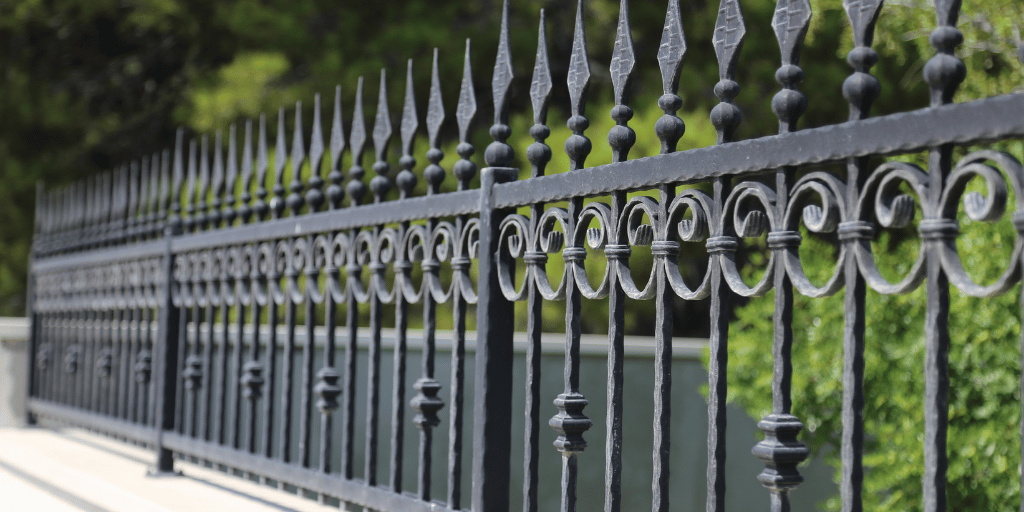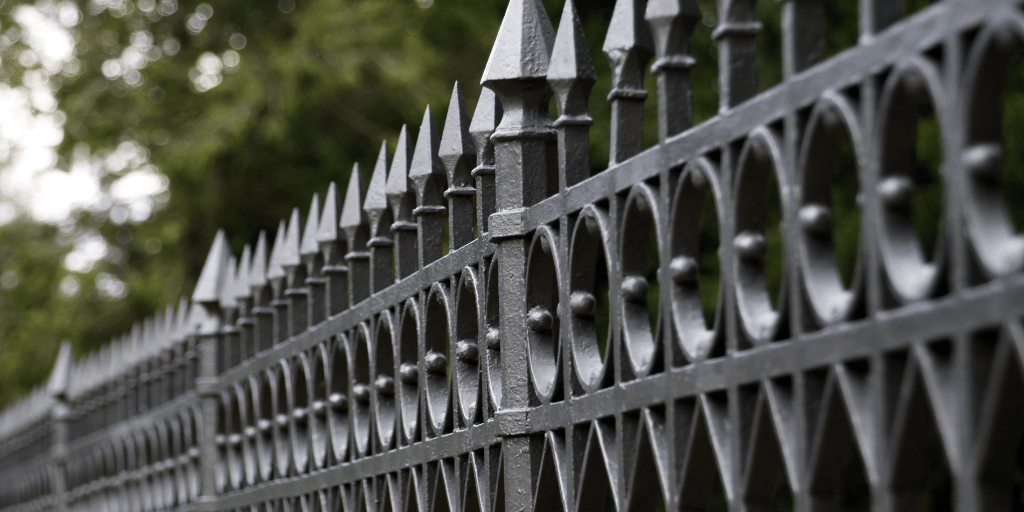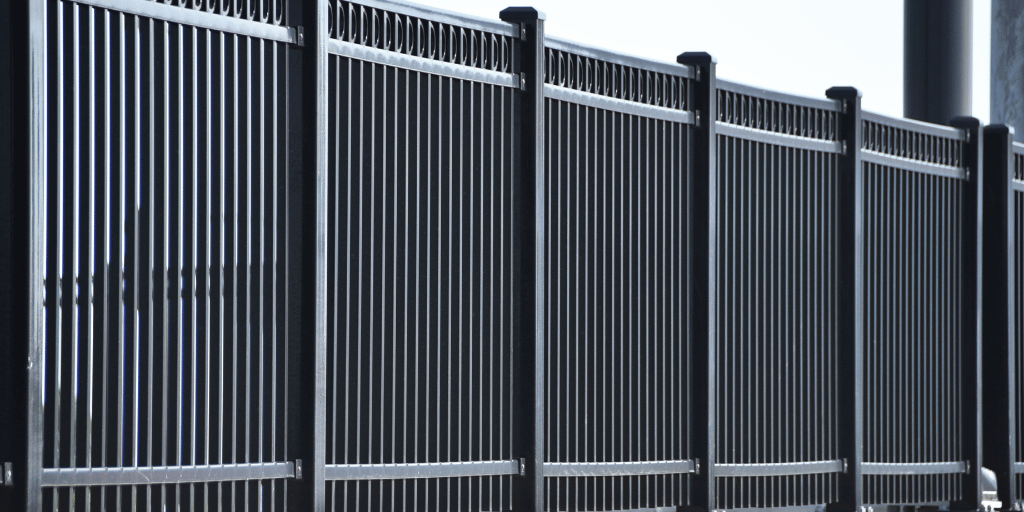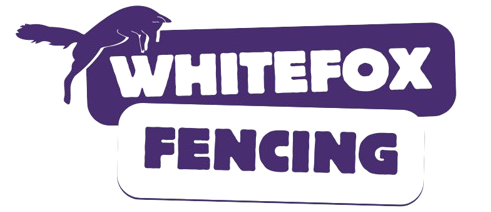A metal fence is a long-lasting and stylish choice for homeowners and businesses looking to enhance security and curb appeal. Whether you’re considering a wrought iron fence, aluminum fence, or steel fence, each option offers durability and a unique aesthetic. However, the cost to install a metal fence can vary significantly based on material, design, and labor expenses.
Factors such as fence type, linear feet, and project cost all play a role in determining the final metal fence cost. In this guide, we’ll break down the average cost, key cost factors, and what you can expect to pay per linear foot for different materials. Understanding these elements will help you plan your fence installation budget more accurately.
How Much Does a Metal Fence Cost in 2025?

The cost to install a metal fence typically ranges from $20 to $85 per linear foot, depending on factors like material, height, style, and labor. Homeowners and businesses choose metal fencing for its durability, security, and aesthetic appeal, but prices can vary widely based on project specifics.
For example, a wrought iron fence costs more due to its intricate designs and strength, while an aluminum fence offers a lightweight, rust-resistant alternative at a lower price. Location also plays a role, as fence installation costs fluctuate based on local labor rates and terrain.
To get an accurate cost estimate, consider your preferred fence type, the total linear feet, and any additional customizations or installation complexities.
Types of Metal Fencing
Metal fences come in various materials like wrought iron, aluminum, steel, and chain link, each offering unique benefits and costs.
Steel Fencing
Steel fences are known for their strength, durability, and security, making them a popular choice for both residential and commercial properties. There are several types of steel fences, each with different cost ranges and unique benefits:
- Corrugated Steel ($20 to $55 per linear foot installed): This fence type is highly durable and resistant to harsh weather conditions, making it ideal for areas with extreme temperatures or high winds. Its industrial aesthetic also adds a modern touch to properties.
- Steel Palisade ($30 to $80 per linear foot installed): Designed for maximum security, steel palisade fencing features vertical steel bars with pointed or curved tops, deterring intruders. This option is commonly used for commercial and industrial properties.
- Galvanized Steel ($10 to $15 per linear foot installed): The most affordable steel fencing option, galvanized steel is coated with a protective zinc layer to prevent rust and extend its lifespan. It is commonly used for chain link fences and utility enclosures.
- Stainless Steel ($15 to $60 per linear foot installed): This high-end option is corrosion-resistant, making it ideal for coastal areas or locations with high humidity. While more expensive than galvanized steel, its low maintenance and sleek appearance make it a popular choice.
Each fence type offers different benefits, so selecting the right steel fence depends on your budget, security needs, and aesthetic preferences.
Aluminum Fencing
Aluminum fences are a popular choice for homeowners and businesses looking for a durable, low-maintenance alternative to traditional metal fencing. With an installation cost ranging from $25 to $75 per linear foot, aluminum offers a balance of affordability, style, and longevity.
One of the biggest advantages of an aluminum fence is its rust resistance, making it ideal for humid climates and coastal areas where moisture exposure is a concern. Unlike wrought iron or steel fences, aluminum does not require frequent painting or sealing to prevent corrosion.
Additionally, aluminum fencing is lightweight, which makes the fence installation process easier and more cost-effective. Available in a variety of styles and finishes, it can mimic the appearance of wrought iron fencing while offering a more budget-friendly option.
Wrought Iron Fencing
A wrought iron fence is a premium choice known for its elegance, durability, and customization options. With an installation cost ranging from $50 to $85 per linear foot, it is one of the most expensive metal fence options, but its timeless appeal and strength make it a worthwhile investment.
Wrought iron is incredibly durable, capable of withstanding harsh weather conditions while providing superior security. Its customization options allow for intricate designs, decorative elements, and unique finishes, making it a preferred choice for upscale residential properties, historic homes, and commercial spaces.
Although wrought iron requires some maintenance to prevent rust, periodic painting and sealing can extend its lifespan. Its combination of beauty and resilience makes it a top-tier fencing option for those seeking both style and security.
Average Costs of Metal Fencing

Metal fencing costs range from $10 to $85 per linear foot, depending on material, design, height, and installation complexity.
Cost per Linear Foot
The cost per linear foot for a metal fence depends on the type of material used and the complexity of the installation. Labor costs typically range from $5 to $25 per linear foot, which is included in the total installed cost. Below is a breakdown of the estimated costs for different metal fencing materials:
| Metal Type | Material Cost (per linear foot) | Installed Cost (per linear foot) |
|---|---|---|
| Steel | $10 – $50 | $20 – $80 |
| Aluminum | $7 – $32 | $25 – $75 |
| Wrought Iron | $25 – $55 | $50 – $85 |
Factors such as fence height, design complexity, and terrain can influence these costs. Understanding the price variations between fencing options helps in making an accurate cost estimate for your fence installation project.
Total Cost for Typical Projects
The total cost of a metal fence installation depends on factors like fence length, material, and site conditions. Below is an estimated cost breakdown for common fencing projects based on installed cost per linear foot:
| Fence Length | Steel Fence Cost | Aluminum Fence Cost | Wrought Iron Fence Cost |
|---|---|---|---|
| 50 feet | $1,000 – $4,000 | $1,250 – $3,750 | $2,500 – $4,250 |
| 100 feet | $2,000 – $8,000 | $2,500 – $7,500 | $5,000 – $8,500 |
| 200 feet | $4,000 – $16,000 | $5,000 – $15,000 | $10,000 – $17,000 |
These average costs are estimates and may vary based on factors such as location, labor rates, fence height, specific design requirements, and site conditions. For a precise fence installation cost, it’s recommended to get quotes from professional fence contractors.
Comparison of Different Metal Fencing Types
When choosing a metal fence, factors like cost, durability, maintenance, and strength play a crucial role. Below is a side-by-side comparison of steel, aluminum, and wrought iron fencing:
| Feature | Steel | Aluminum | Wrought Iron |
|---|---|---|---|
| Cost | Moderate | Low to Moderate | High |
| Durability | High | Moderate | Very High |
| Maintenance | Low to Moderate | Low | Moderate to High |
| Lifespan | Long | Long | Very Long |
| Rust Resistance | Varies (depends on type) | High | Low (without treatment) |
| Strength | High | Moderate | Very High |
While wrought iron fencing is the most expensive option, it provides unmatched strength and longevity, making it a great long-term investment. Aluminum fencing is the most affordable and low-maintenance choice, ideal for those seeking durability with minimal upkeep. Steel fencing offers a good balance of cost and durability, making it a versatile option.
Although wrought iron has a higher upfront cost, its extended lifespan and potential to increase property value may make it the best option for homeowners looking for both security and aesthetic appeal.
What Factors Influence the Cost of a Metal Fence?

Several factors impact metal fence costs, including material, height, design, installation complexity, labor rates, location, and additional customizations.
Material Grade and Quality
The quality and thickness of metal significantly impact metal fence costs. Higher-grade metals, such as stainless steel or heavy-duty wrought iron, cost more due to their durability, strength, and resistance to rust. Thicker materials provide better security and longevity, reducing the need for frequent fence repair. While opting for premium metals increases upfront costs, it often results in lower long-term maintenance and extended lifespan.
Fence Height and Length
Both fence height and length play a major role in the total cost of installation. Taller fences require more materials and reinforcement, increasing both material costs and labor expenses. Here’s how dimensions affect pricing:
- A 4-foot aluminum fence may cost $25 to $50 per linear foot, while a 6-foot aluminum fence can range from $35 to $75 per linear foot.
- A 100-foot steel fence could cost between $2,000 and $8,000, while a 200-foot steel fence may range from $4,000 to $16,000.
Style and Design
Custom ornamental designs, decorative elements, and color options can significantly impact fence installation costs. A basic aluminum fence will be more affordable than an elaborately designed wrought iron fence with intricate patterns or custom scrollwork. Specialty coatings, powder finishes, and custom gates also add to the overall project cost.
Labor Costs
Labor costs typically range from $5 to $25 per linear foot, depending on fence type, complexity, and local labor rates. Factors that influence labor costs include:
- Material weight: Steel and wrought iron fences require more manpower and specialized tools for installation.
- Design complexity: Ornamental fences or fences with custom gates require more time and precision.
- Installation difficulty: If the site terrain is uneven or rocky, additional labor is needed to ensure proper fence post installation.
Geographic Location
Where you live affects both material and labor costs due to local market conditions and climate considerations. In areas with higher labor rates, installation costs will be more expensive. Additionally, regions with harsh weather conditions may require specialized coatings or materials, such as galvanized steel or stainless steel, to prevent rust and extend the fence’s lifespan.
Site Preparation Requirements
Before installing a metal fence, proper site preparation is necessary, and this can add to the overall cost factors. Key elements that influence preparation costs include:
- Terrain: Uneven or sloped land may require grading or additional materials for stabilization.
- Soil type: Rocky or clay-heavy soil can make fence post installation more labor-intensive and expensive.
- Existing structures: If an old fence needs to be removed, demolition and disposal fees add to the total cost of the project.
Understanding these cost factors helps in planning a realistic fence installation budget and ensuring a durable, high-quality fence that meets both aesthetic and functional needs.
Additional Cost Considerations
Gates and Accessories
Adding a gate to a metal fence increases the overall fence installation cost, with prices varying based on size, material, and automation features. Standard single-swing gates cost between $200 and $1,500, while automatic gates with motors and security systems can range from $2,000 to $7,000.
Other accessories that can add to the total cost include:
- Post caps ($5 to $50 each) – Enhance aesthetics and protect fence posts from weather damage.
- Decorative elements ($50 to $500 per section) – Custom scrollwork, ornamental designs, and powder-coated finishes increase visual appeal.
- Security features – Locks, keypads, or smart gate openers add convenience but come at an extra cost.
Terrain and Installation Challenges
The condition of your property affects the cost to install a fence. Flat, even ground requires minimal preparation, while challenging terrain can increase labor costs.
- Sloped land – Requires stepped or racked fencing, which takes more materials and labor.
- Rocky soil – Hard ground makes fence post installation more difficult, often requiring special equipment or reinforced posts.
- Tree roots or underground utilities – Can delay installation and may require additional excavation.
These challenges add both time and labor expenses, increasing overall project costs.
Removal of Existing Fencing
If you need to replace an old fence, removal adds to the fence installation cost. Fence contractors typically charge $10 to $20 per linear foot for removal and disposal, depending on material type and site accessibility. Heavy materials like wrought iron fences cost more to remove compared to chain link or aluminum fences.
Permits and Regulations
Before starting a metal fence installation, it’s essential to check local zoning laws and permit requirements. Some areas require permits for fences over a certain height or if installing near a property line or pool fence.
Permit costs range from $50 to $500, depending on local regulations. Homeowners may also need to comply with HOA rules, which can dictate fencing materials, colors, and height restrictions. Failing to obtain the necessary permits may lead to fines or required modifications, increasing project costs.
Checking local guidelines before installing the fence ensures compliance and helps avoid unexpected expenses.
Contact a Professional for Metal Fencing Installation
Getting an accurate cost estimate for a metal fence installation requires assessing factors like material, design, terrain, and local labor rates. While general cost ranges can help with budgeting, the best way to determine your exact fence installation costs is by consulting professionals.
At Fencing Service Experts, we provide expert guidance and custom quotes tailored to your project’s needs. Whether you’re considering wrought iron, aluminum, or steel fencing, our team ensures high-quality installation with durable materials that fit your budget.
Contact us today for a free estimate, and let’s discuss the best fencing option for your property. Our experienced fence installers are ready to help you enhance security, style, and value with a professionally installed metal fence.
FAQs
What is the most affordable metal fencing option?
Galvanized steel and chain link fences are the most budget-friendly metal fencing options, costing $10 to $25 per linear foot installed. They offer durability and low maintenance, making them ideal for large areas while keeping costs lower than wrought iron or aluminum fencing.
How long do metal fences typically last?
With proper maintenance, metal fences can last 20 to 50+ years. Wrought iron fences last the longest but require upkeep to prevent rust. Aluminum fencing is naturally rust-resistant, while galvanized steel fences can last decades with protective coatings and occasional maintenance.
Are there any hidden costs in metal fence installation?
Beyond material and labor, additional costs may include permits ($50-$500), site preparation, old fence removal ($10-$20 per linear foot), and accessories like gates or post caps. Sloped or rocky terrain may also require extra labor, increasing total project costs.
Can I install a metal fence myself to save money?
While DIY installation can reduce labor costs, metal fencing requires precise post setting, leveling, and sometimes welding. Mistakes can lead to costly repairs. Hiring professional fence installers ensures durability, correct installation, and compliance with local codes, ultimately saving time and money.
How does the cost of metal fencing compare to other materials?
Metal fences typically cost more than wood ($15-$50 per linear foot) but less than high-end materials like stone or masonry ($50-$150 per linear foot). Aluminum fencing is comparable to vinyl fencing ($25-$75 per linear foot) but offers better strength and longevity.
